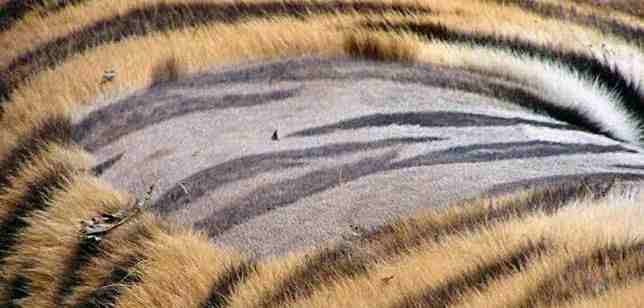 Alfred Ajibola
- Wed, 05th June, 2019 @ 12:16 PM
Alfred Ajibola
- Wed, 05th June, 2019 @ 12:16 PM
Topics in Basic Science
What is science? Qualities of a scientist Resources from living things Resources from animals Importance of immunization Types of Carbohydrates: Monosaccharides and Polysaccharides Carbohydrates: Disaccharides and Oligosaccharides Len Academy Examination Questions for Basic Science, JSS2, 2nd Term Len Academy Examination Questions for Basic Science, JSS3, 3rd Term Len Academy Examination Questions for Basic Science, JSS3, 2nd Term Primates: Characteristics of Primates Effects of improper waste management Waste Management: Causes of waste in the society Concept of mass and weight Mineral Salts: Sources, functions and deficiencies of macronutrients Sources, functions and deficiencies of micronutrients Len Academy questions for Basic Science JSS1 Len Academy mid-term test questions for Basic Science JSS1, 2nd Term Microorganisms causing food, water and air borne diseases Vector borne organisms and the diseases they cause Bones of the Human SkeletonAcademic Questions in Basic Science
Which of the following diseases is associated with river blindness?
A. Anthrax
B. Lawnmower Disease
C. Onchocerciasis
D. Devil's Crunch
E. Trypanosomiasis
F. Tularemia
The vector for yellow fever is _____.
A. Aedes Mosquito
B. Female Anopheles Mosquito
C. Plasmodium
D. Flavivirus
E. Black Fly
F. Bacillus Anthracis
The bones of the head and face make up the skull. These bones are _____ in number.
A. 12
B. 14
C. 16
D. 18
E. 20
F. 22
Bacteria are not a constituent of our environment.
A. True
B. False
Below are types of drugs. Which of these is considered as pain killers?
A. Stimulants
B. Depressants
C. Opiods and Morphine Derivatives
D. Hallucinogens
E. Anabolic Steroids
F. Cannabinoids
Which of the following statement is false concerning drugs?
A. Drugs can be inhaled
B. Drugs can be injected directly into the bloodstream
C. Drugs can be eaten
D. Drugs exist exclusively in the forms of tablets and syrups
E. Drugs can be placed under the tongue
F. Drugs can be taken with water or another liquid
Vaccination involves a process of introducing pathogens or germs into a person in order to prevent such person from the diseases they cause.
A. True
B. False
With regards to the human health, foreign bodies are best regarded as _____.
A. International bodies
B. Antilators
C. Antibodies
D. Antigens
E. Antibiotics
F. Antidotes
A vector is defined as any animal that transmits disease causing organisms (pathogens or germs) into a host. Recall that the term disease means a deviation from the normal physiological and anatomical state of an organism which is usually associated with some specific signs and symptoms
Ideally, a vector should be an animal; and organism(s) that cause diseases must reside within or on such animals. It is important to point out this fact because we have other organisms that aren't animals, yet are still capable of transmitting diseases.
Please read on the basic characteristics of life here.
Note: A host is an organism on which another organism (called a parasite) lives and feed on. They usually suffer in a parasitic relationship.
You can read on micro-organisms causing diseases here.
These disease causing organisms (pathogen or germs) when inside the vector causes no harm to it. However, as soon as the vector introduces the pathogen into the host, it affects the physiological system of the host; and as a result brings about diseases in the infected host.
As an instance, the pathogen for river blindness in humans is Onchocerca volvolus. This pathogen initially lived inside the blackfly which happens to be its vector. Onchocerca volvolus (within the blackfly) causes no harm to it, but as soon as the blackfly introduces it into its host (humans in this case), it may cause river blindness to its host.
Please read on immunization here.
The table below shows some diseases, their vectors, the micro organisms carried or transmitted by these vectors (which are called pathogen, germs or disease causing organisms), alongside the diseases they transmit to humans.
|
Diseases |
Vectors |
Pathogens |
Symptoms |
|
Malaria |
Female anopheles mosquito |
Plasmodium falciparum and Plasmodium vivax (protozoan) |
High fever, shivering and sweating |
|
Yellow Fever |
Aedes mosquito |
Flavivirus fibricus |
High fever, decreased temperature, backache, headache and jaundice |
|
Sleeping sickness or Trypanosomisis |
Tse-tse fly |
Trypanosoma brucei (protozoan) |
Regular sleepiness, sluggishness, drowsiness and fever |
|
Typhus fever |
Body Lice |
Rickettsia prowazekii (bacterium) |
Muscle pains and fever |
|
Dengue fever or Devil’s crunch or Breakbone fever |
Female aedes mosquito |
Dengue fever virus (DENV) |
Severe joint, back and head pains, Fever, nausea and vomitting |
|
River Blindness or Onchocerciasis |
Blackfly |
Onchocerca volvolus (a nematode named filarial worm) |
Blindness, hedache and fever |
|
Lassa hemorrhagic fever or Lassa fever |
Rodents |
Lassa virus |
Bleeding, fever and headaches |
|
Anthrax |
Housefly |
Bacillus anthracis (Bacterium) |
Difficulty in breathing, chest pain and fever |
|
Plague or systemic invasive infectious disease |
Rat flea |
Yersinia pestis (bacterium) |
Breathing difficulty, shivering, cough and fever |
|
Tularemia or Rabbit fever or Lawnmower Disease |
Mosquitoes and Tick |
Francisella tularensis (bacterium) |
Joint pains, Headaches and Dry cough |
Kindly share this article via the links below:

Please click here to contact Alfred if you require any of the following services:
If you need a standard website at an affordable price.
Online training on the academic subjects: biology, chemistry and basic science.
If you require an advanced smart school management system (web application) for your school.
Click here to read on Len Academy Smart School Software.
Please click here to follow Len Academy on Google News.
Amazing facts in Basic Science
According to scientific research, if the first tear drop comes from the right eye, it’s tears of joy. If it comes from the left eye, then it is as a result of pain
Dentistry is the oldest profession in the world. This is considered true because a research conducted by the University of Bologna, Italy on a 14,000-year-old skull found that one rotten tooth in the jaw had been deliberately scoured and scraped with a dental tool
Scientific research has it that the human nose can distinguish more than a trillion different odors

Tigers have striped fur. So also is their skin

The most common wild bird in the world is native to Africa, and it's the red-billed quelea with a population estimated to be around 1.5 billion
Of all animals, mosquitoes hold the record of killing most humans annually. They are responsible for the deaths of 725,000 - 1,000,000 persons yearly
Antibiotics fights and kills bacteria. However, they do nothing to a virus
All insects have six legs. However, dragonfly has six legs but can't walk
The chin is defined as the protruding part of the face below the mouth, formed by the apex of the lower lip. It is shown below:

Interestingly, humans are the only animals with chin

Ripe cranberries will bounce like a ball. For this reason, they are nicknamed 'bounceberries'. They will also float in water
Notable points in Basic Science
We have six classes of food. These are:
Carbohydrates
Proteins
Fats and Oils
Vitamins
Mineral Salts
Water
In humans, roughages are not classified as one of the classes of food. This is so because they aren't digested. Instead, roughages facilitate the movement of bowels in the large intestine (colon); and for this reason, they can become useful in treating constipation.
Food refers to anything that is ingested by living organisms, giving them nutrients and thus enabling them to stay alive.
As an instance, 99% of a panda's diet is bamboo. In this case, bamboo is considered as food to a panda since it provides a source of nutrient and keeps it alive. This is shown in the image below:

The only process in nature that actively enriches our atmosphere with oxygen is photosynthesis. Every other process like respiration, burning and combustion takes away oxygen from it. In addition, they introduce carbon(IV)oxide (CO2) into the atmosphere.
Photosynthesis is also the only process that takes away carbon(IV)oxide (CO2) from the atmosphere.
Photosynthesis is defined as a process by which green plants manufacture food by utilizing carbon(IV)oxide and water in the presence of sunlight.
Oxygen is given off as a by-product of photosynthesis. In regards to this, it is recommended that each person plants a tree.
Matter is composed of particles which can be:
Tightly packed together (as seen in solids).
Loosely packed together (as seen in liquids).
Completely separated (as seen in gases).
The movement of the particles of matter is a function of the overall kinetic energy present in them. You can think of kinetic energy as energy in motion.
An increase in the particles' vibrational, rotational or translational motion will imply an increase in temperature while a decrease in the particles motion (vibrational, rotational and translational) will mean a decrease in temperature. Based on this knowledge, we can therefore define temperature as the measure of the average kinetic energy possessed by the particles of matter.
Intelligence Quotient (IQ) is a score derived from a set of standardized tests developed to measure a person's cognitive abilities in relation to their age group.
IQ may also be defined as the ratio of mental age (MA) to chronological age (CA) multiplied by 100.
Below are some formulas pertaining Intelligence Quotient:
IQ = MA x 100 ÷ CA
MA = Mental age
CA = Chronological age
IQ above 100 = Brilliance
IQ that equals 100 = Average
IQ below 100 = Below Average